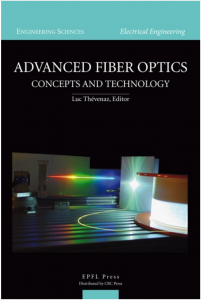Optical fibres are currently the most efficient and effective transmission lines and our Group develops advanced techniques to encode and decode information carried by light in optical fibres.
In particular our Group could demonstrate for the first time the possibility to modify and to control the speed of a light signal in an optical fibre, offering an important timing tool that was missing to control the information carried by light. This will impact on applications such as telecommunication networks, optical computing and optical storage (all optical memories storing a light signal that can be recalled later).
A technique leading to a dramatic increase in the capacity of optical fibres has also been recently achieved, in osmotic collaboration with the EPFL-PHOSL team. This simple, innovative solution reduces the amount of space required between the pulses of light that transport data. The breakthrough could increase the throughput of data in telecommunications systems by a factor of ten.
Our Group is also a key player on the global research scene in distributed fibre sensing based on optical nonlinearities. This type of sensors is foreseen to be an essential tool to secure critical installations, such as dams, tunnels and pipelines.
A new book has just been published, covering the concepts and the technology behind the most advanced applications of fibre optics. This book collects the teaching presented during a Training School organized by the COST Action 299 “FiDES” in Spring 2009 and gives all necessary background to understand modern applications of optical fibres.
The target public is Master and PhD students in optics, early-stage Researchers and Engineers involved in modern applications of optics.

For more information about the book, please follow this link.